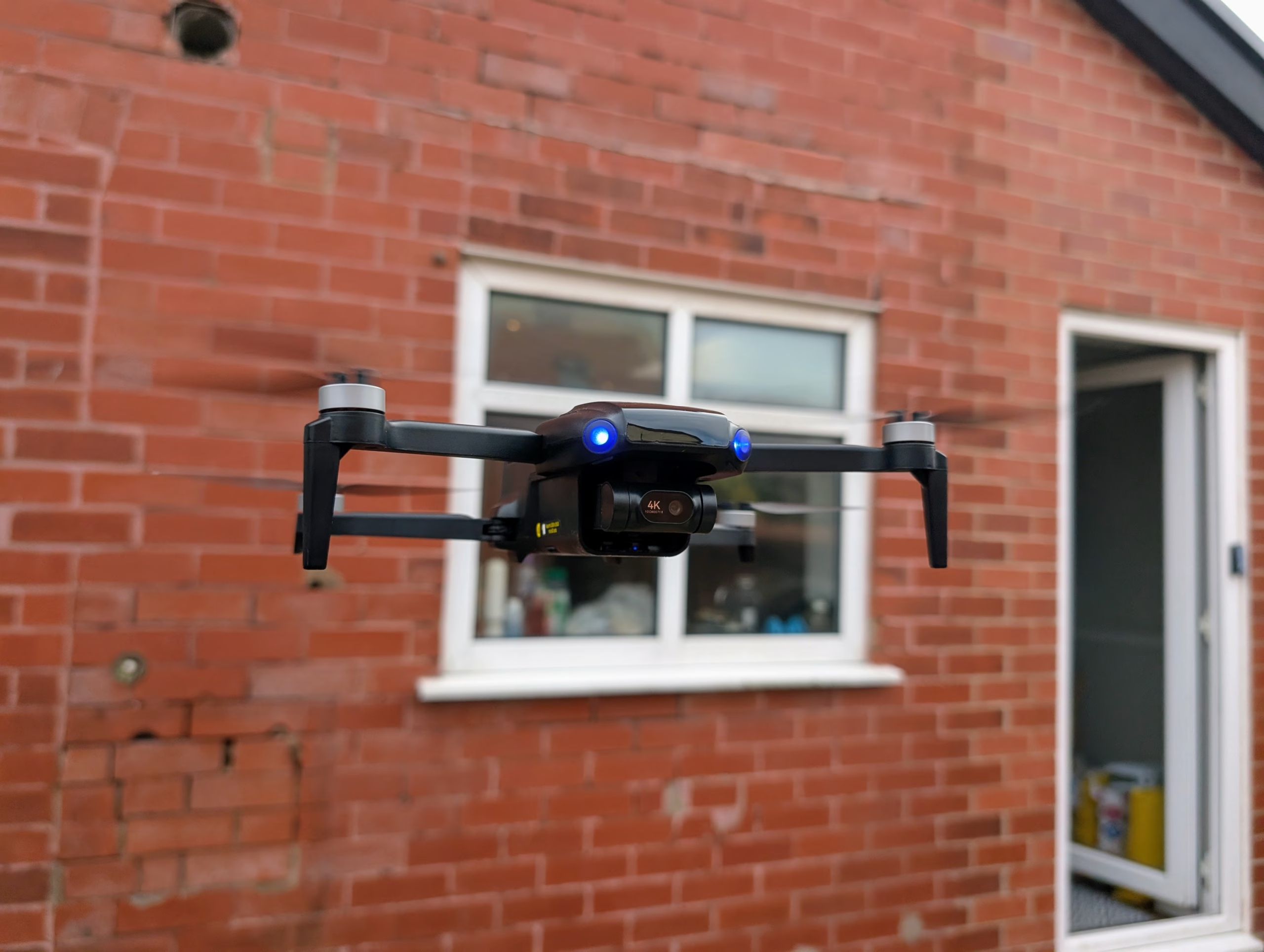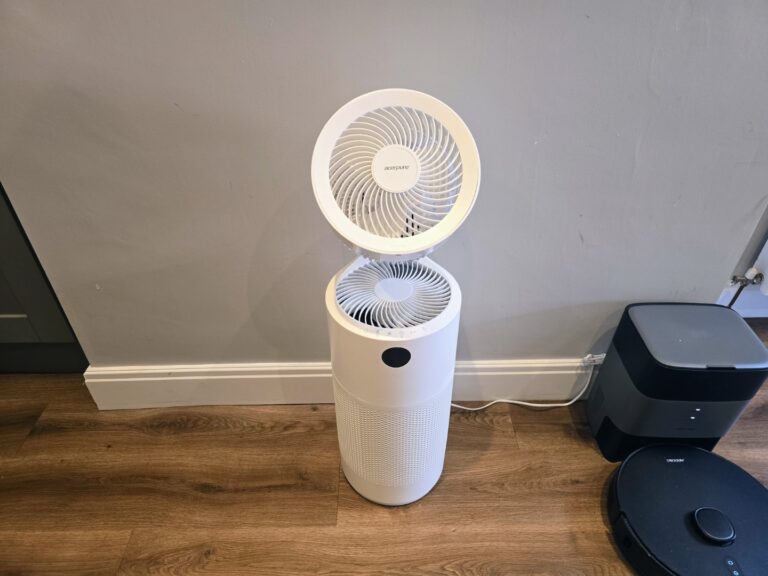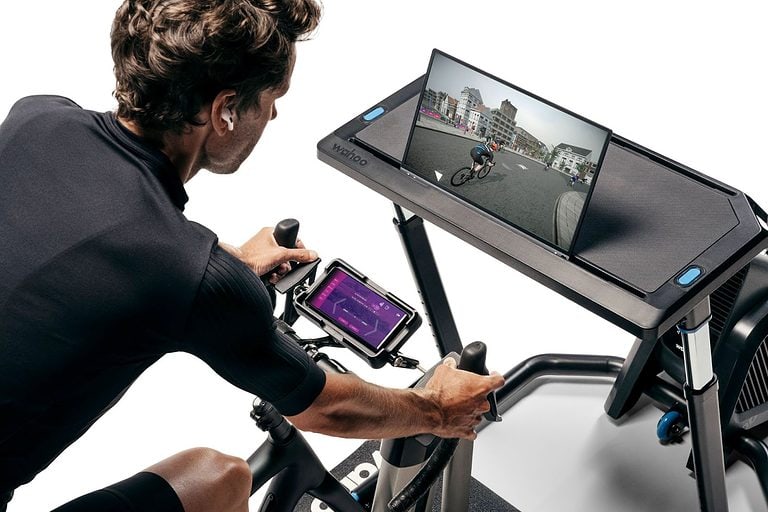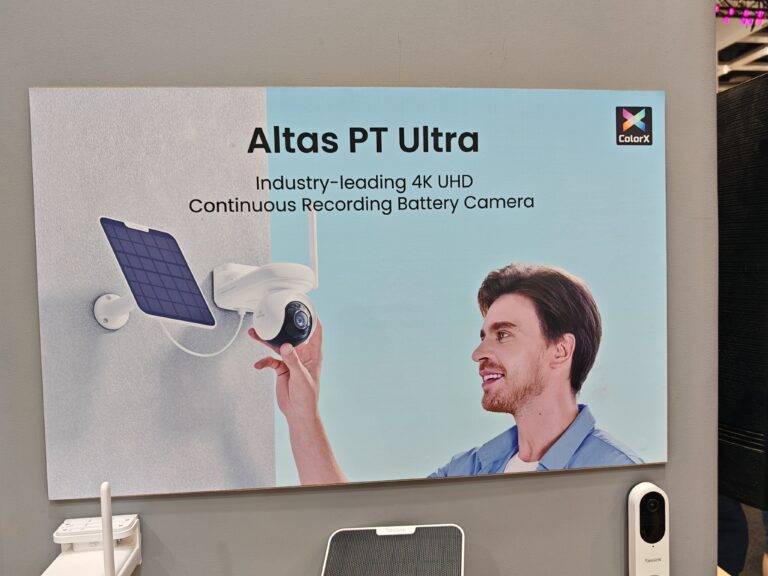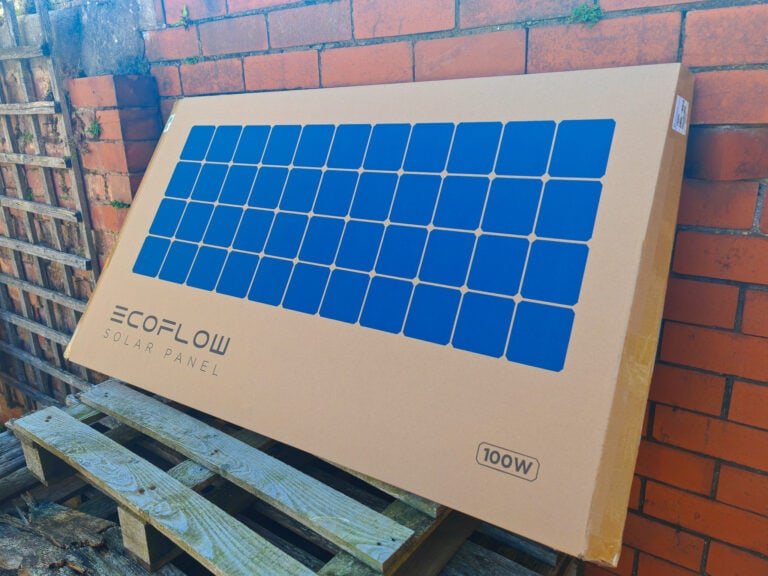Any links to online stores should be assumed to be affiliates. The company or PR agency provides all or most review samples. They have no control over my content, and I provide my honest opinion.
The last time I reviewed a drone was back in 2023 with the Powervision PowerEgg X, which no longer appears to be trading. It was a decent drone, but the pricing wasn’t that different from the superior DJI Air 2S.
So, when Ruko reached out to review the Ruko U11MINI 4K, I was eager to try it. Priced at £330 on Amazon UK, it is a well reviewed drone with an impressive specification including 4K/30fps, 32 minute flight time per battery and a 6km flight range.
| Preview | Product | Rating | Price | |
|---|---|---|---|---|

| U11MINI 4K Ruko Drone with camera 8K Photo & 4K/30fps Video,... |
£329.99 | Buy on Amazon |
Specification
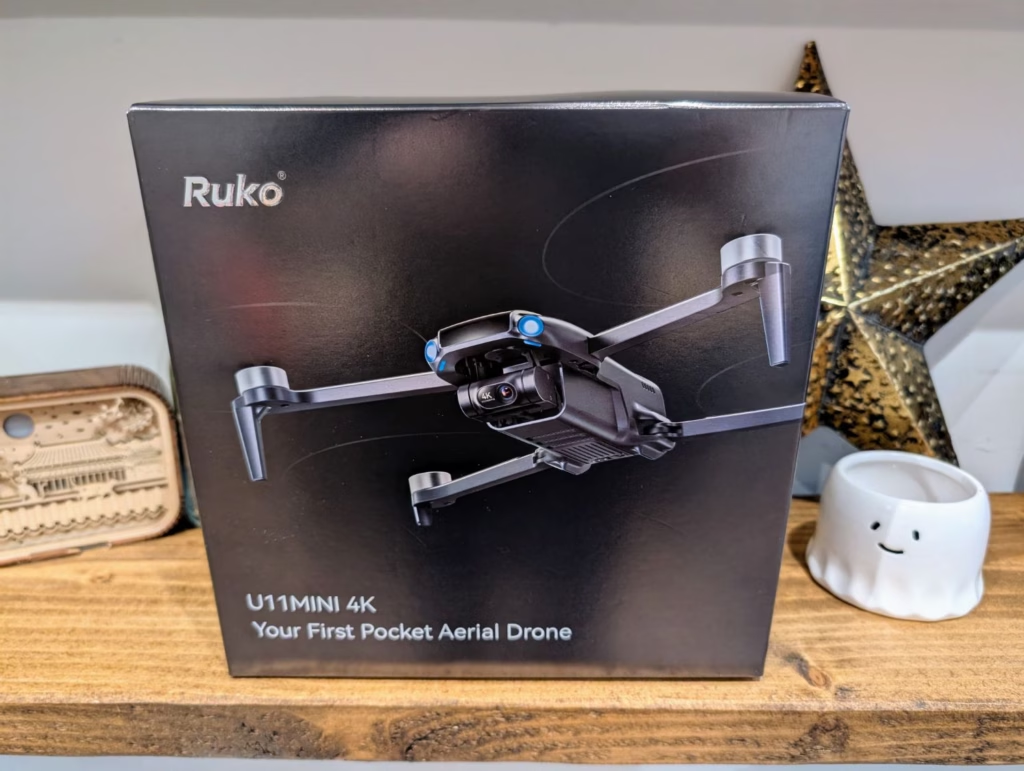
The Ruko U11MINI 4K packs a considerable number of features into its compact frame. The specifications are aligned with what one might expect from a more expensive drone, which makes it an interesting proposition for those on a budget.
- Mini pocket size, easy to put in a pocket
- 8K Picture & 4K@30fps Video
- 48MP 1/2″ CMOS sensor
- 3 Batteries for 96mins Flight Time
- 3-Axis Brushless Gimbal with EIS
- Quadruple positioning system ensures smooth takeoff
- 6 km / 20000 ft ultra long distance image transmission
Features
Cinematic 8K Photos & 4K Video
This drone’s camera captures high-resolution imagery, suitable for a variety of projects. It can take detailed 8K still photographs and record smooth 4K video at 30 frames per second. These specifications allow you to document your flights, from scenic landscapes to urban architecture, with considerable clarity. 📸
Pro-Level Stability, Made Effortless
To produce steady footage, the drone is fitted with a 3-axis brushless gimbal and Electronic Image Stabilisation (EIS). These systems work together to counteract movement and vibration during flight. The result is smoother video, whether you are flying along a coastline or following a subject on a path.
Hands-Free Cruise Control
The cruise control function allows you to set a constant speed and direction for the drone. With flight management automated, you can concentrate on controlling the camera to frame your shot, adjust the zoom, or simply observe the surroundings without needing to manage the throttle continuously.
Extended Long-Range Transmission
The drone maintains a stable HD video feed from a distance of up to 6 kilometres (approximately 3.7 miles). This long-range transmission capability lets you explore and film locations that are further away, providing a reliable live view directly to your controller.
Exceptional Flight Duration
Three intelligent batteries are included, providing a total flight time of up to 96 minutes. With each battery offering around 32 minutes of air time, you can conduct longer flights or multiple shorter ones without the immediate need to stop and recharge. 🔋
Ultra-Lightweight Pocket Design
This drone weighs under 249 grams and has a foldable, palm-sized design, making it very portable. In the UK, because it has a camera, you must register for a Flyer ID. However, its low weight means you are not required to complete the A2 Certificate of Competency test. A carrying case is also supplied for convenient transport.
Reliable Return-to-Home
The drone features an automated Return-to-Home (RTH) system for safety. You can manually bring the drone back by pressing a single button. The RTH function also activates automatically if the battery level becomes critically low or if the connection to the controller is lost, helping to prevent the loss of the drone. 🏠
Tailored App Exploration Modes
The companion app includes several flight modes to suit different skill levels. A Beginner Mode helps new users learn to fly in a controlled setting. For more experienced pilots, the app offers advanced options like Waypoint Planning, Follow-Me, and Orbit Flight. Additional camera features include a 5x digital zoom and a dedicated night mode for low-light conditions.
Unboxing

The Ruko U11MINI 4K typically arrives in a compact package that includes a high-quality semi-rigid carrying case. Inside the case, all the components are securely housed in custom-moulded compartments. The standard package contains the U11MINI drone itself, a remote controller, and one or three intelligent flight batteries depending on the bundle purchased. Also included are several data cables with Lightning, USB-C, and Micro-USB connectors to ensure compatibility with a wide range of smartphones. A USB-C cable is provided for charging the drone batteries and the remote controller. The package is rounded out with a set of spare propellers and a user manual. The inclusion of a durable carrying case is a welcome addition, providing excellent protection and making it easy to transport the drone and its accessories.

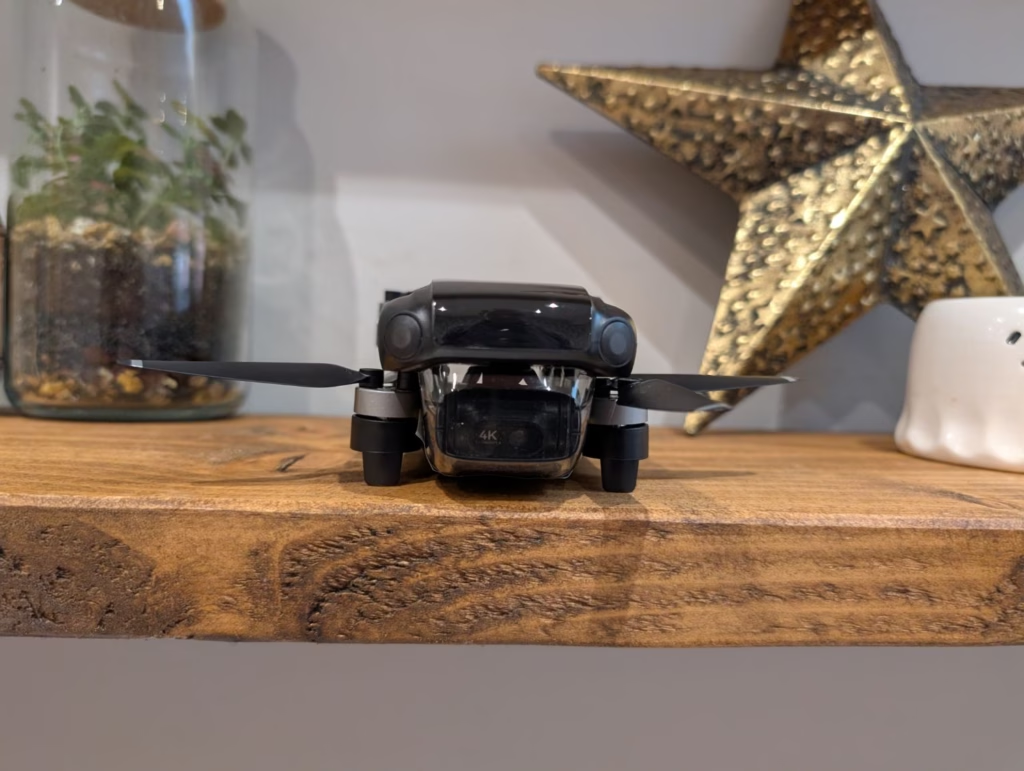
Set Up



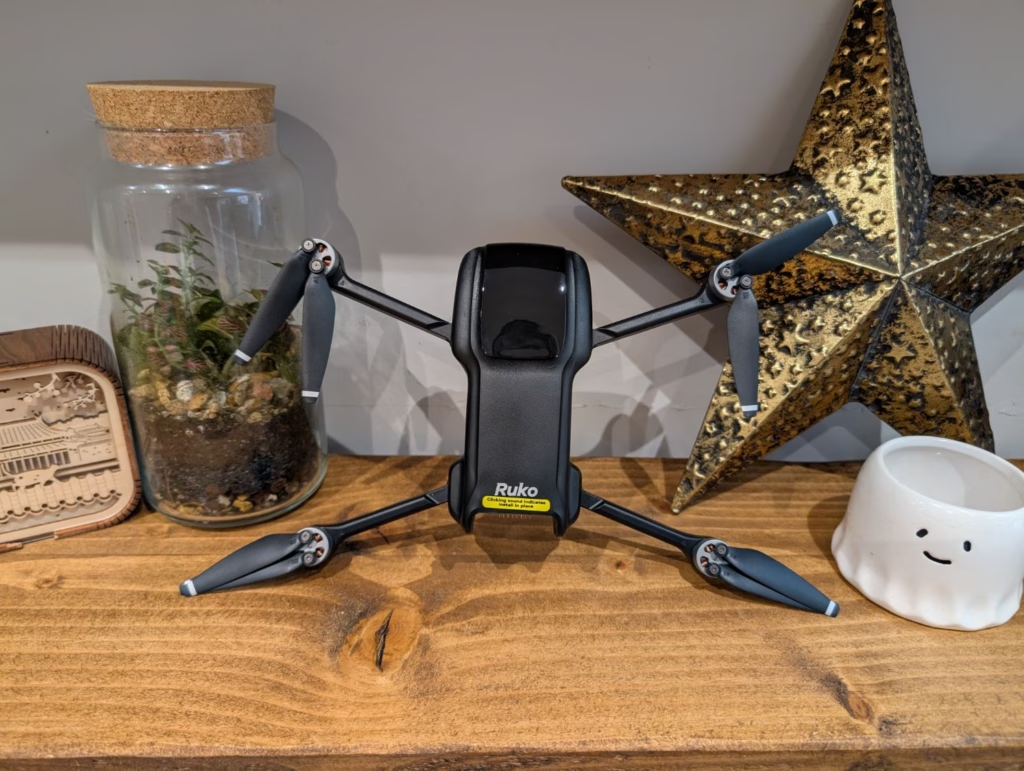
Initial setup is straightforward, though there are a few steps that might trip up absolute beginners. First, you need to charge both the drone battery and the remote controller. Both use USB-C charging, which is convenient. The battery charges at around 15W, while the controller draws about 11W.
Before first flight, you must install the propellers. They’re colour-coded and marked, so it’s difficult to get them wrong, but the manual could be clearer about the clockwise/counter-clockwise orientation. Each propeller clicks into place and should sit flush – if it’s sitting at an angle, it’s not properly seated.
The gimbal has a protective cover that must be removed before flight. It’s easy to forget this step, and the app doesn’t always warn you clearly. Flying with the gimbal cover on will produce terrible footage and could damage the gimbal motors.
Calibration is required before first flight. The compass calibration involves rotating the drone horizontally until it beeps, then vertically until it beeps again. Do this away from metal objects and power lines. The gyroscope calibration should be done on a flat, level surface. These calibrations are important – skip them and you’ll likely experience erratic flight behaviour.
Ruko App
The Ruko F11 app (yes, it’s confusingly not called the U11 app) is available for both iOS and Android. It’s functional but showing its age in terms of interface design. The app connects to the drone’s WiFi network once you power on both the drone and controller.
Connection reliability was mixed in my testing. Sometimes it connected immediately, other times I had to restart the app or toggle WiFi off and on. Once connected, the live feed was stable, but getting that initial connection could be frustrating.
The app interface shows your altitude, distance, speed, battery level, and GPS satellite count. The controls are reasonably intuitive – takeoff and landing are handled by slide buttons to prevent accidental presses. Camera controls include photo, video, and the 5x digital zoom.
Screen recording is built into the app, which is useful for capturing your flights with telemetry data overlaid. However, the in-app zoom doesn’t appear in screen recordings – only in footage saved to the microSD card. This inconsistency is annoying and not well documented.
The intelligent flight modes are accessed through a menu system that’s buried a few taps deep. It works, but DJI’s interface is far more polished. Settings allow you to adjust return-to-home altitude, enable beginner mode (which limits altitude and distance), and configure various camera parameters.
One useful feature: you can fly the drone without a phone connected. All essential functions are available on the controller itself, though you obviously lose the FPV feed. This is handy for quick flights or if your phone battery is low.
Remote Controller


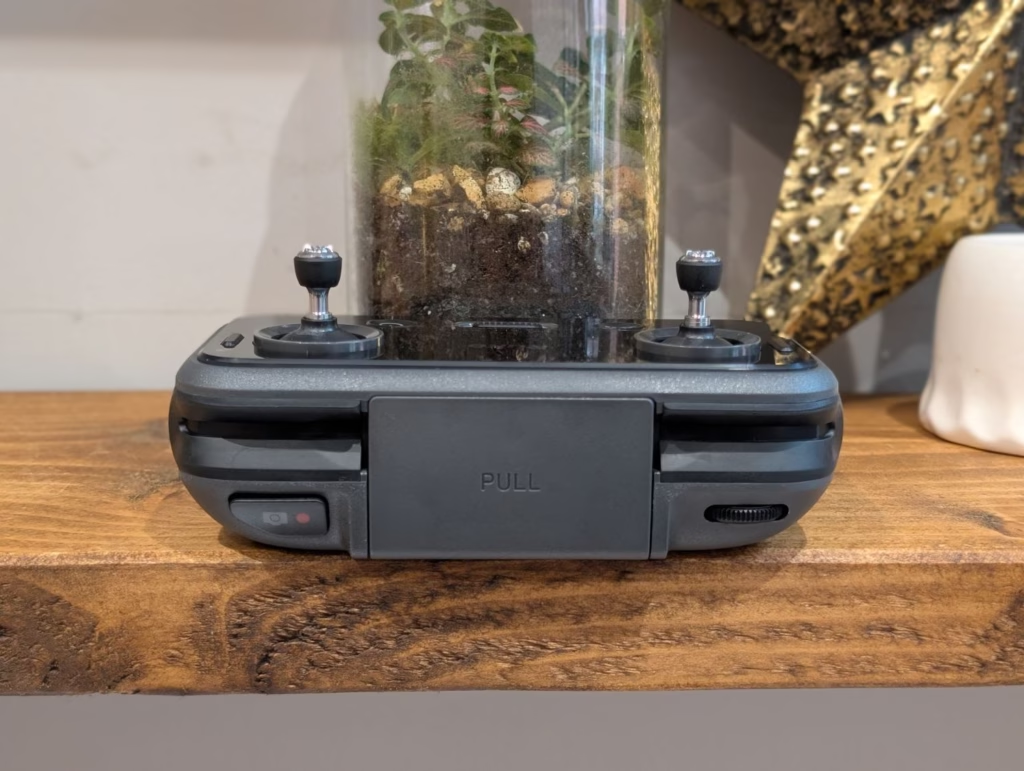
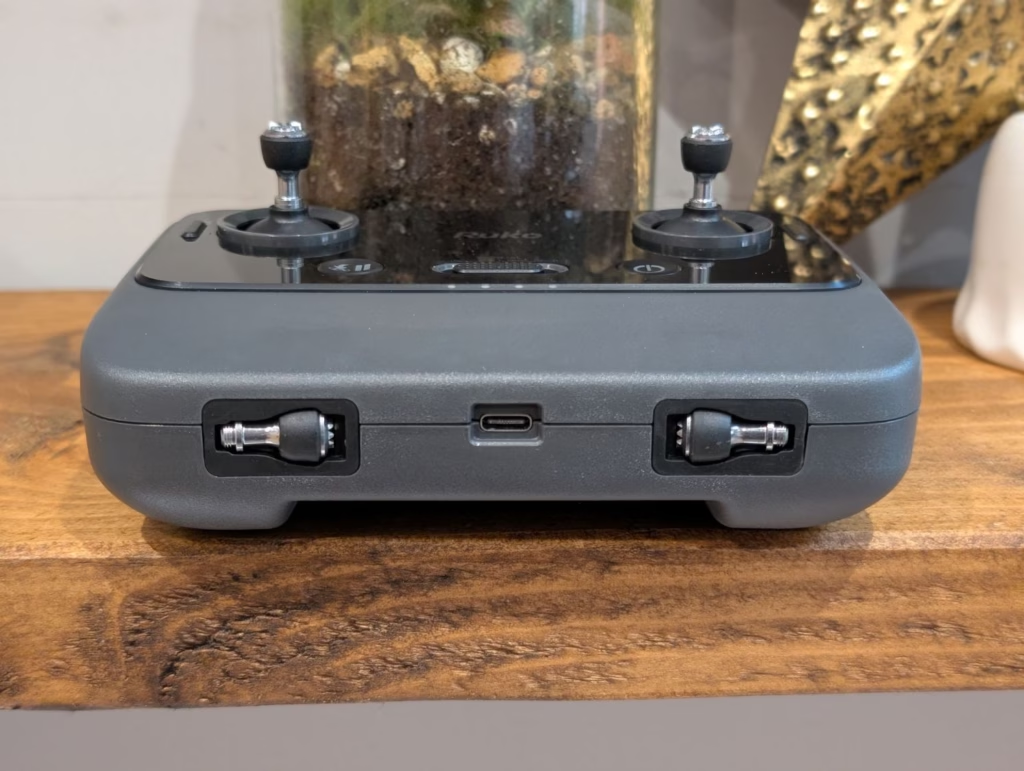
The controller is a budget design but reasonably well constructed. It features pull-out smartphone grips with an integrated cable holder – you choose the appropriate cable (Lightning, USB-C, or Micro-USB) for your phone. The grips have silicone grooves designed to prevent them pressing your phone’s buttons, though this didn’t work perfectly with my phone’s volume buttons.
Build quality is acceptable. The plastic feels a bit cheap, but nothing flexes or creaks worryingly. The sticks are removable and store in the base of the controller, which is convenient for transport but means you need to remember to install them before flying.
Button layout is logical once you learn it. The left shoulder has a rotary dial for gimbal tilt control – smooth and proportional, though it rotates quite slowly. The right shoulder has a photo button (short press) and video button (long press). There’s also a dedicated cruise control button that I found myself using frequently.
The GPS toggle (long press) doubles as a camera tilt button (short press), which is confusing. Why not just use the dial? The return-to-home button is clearly marked and positioned where you won’t press it accidentally. There’s also a buzzer function (long press on RTH when motors are stopped) for locating a downed drone.
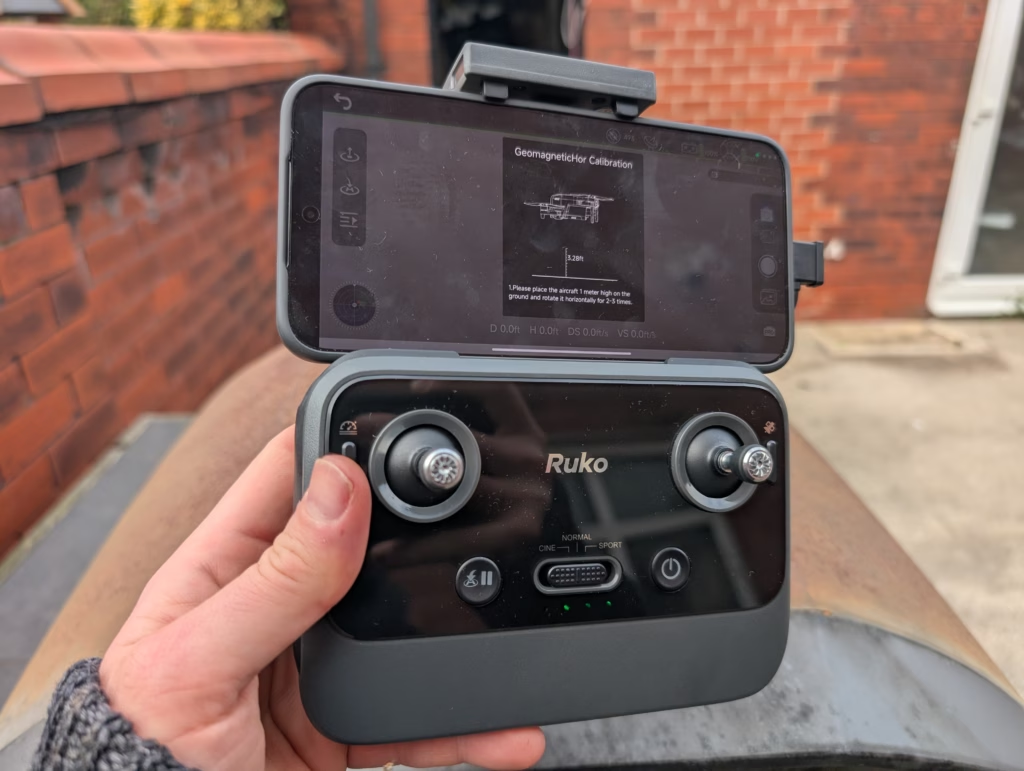
The speed slider has three positions: cinema mode (4.5 m/s claimed), normal mode (8 m/s claimed), and sport mode (14 m/s claimed). In my testing, actual speeds were lower – about 3.8 m/s in cinema, 7.0 m/s in normal, and 12.5 m/s in sport. That’s a pattern with this drone: claimed specs versus reality don’t always align.
Battery life on the controller is excellent. The 1,500mAh battery lasted through multiple flight sessions without needing a recharge. It also charges your phone while connected, which is useful but will drain the controller battery faster.
Flight Performance
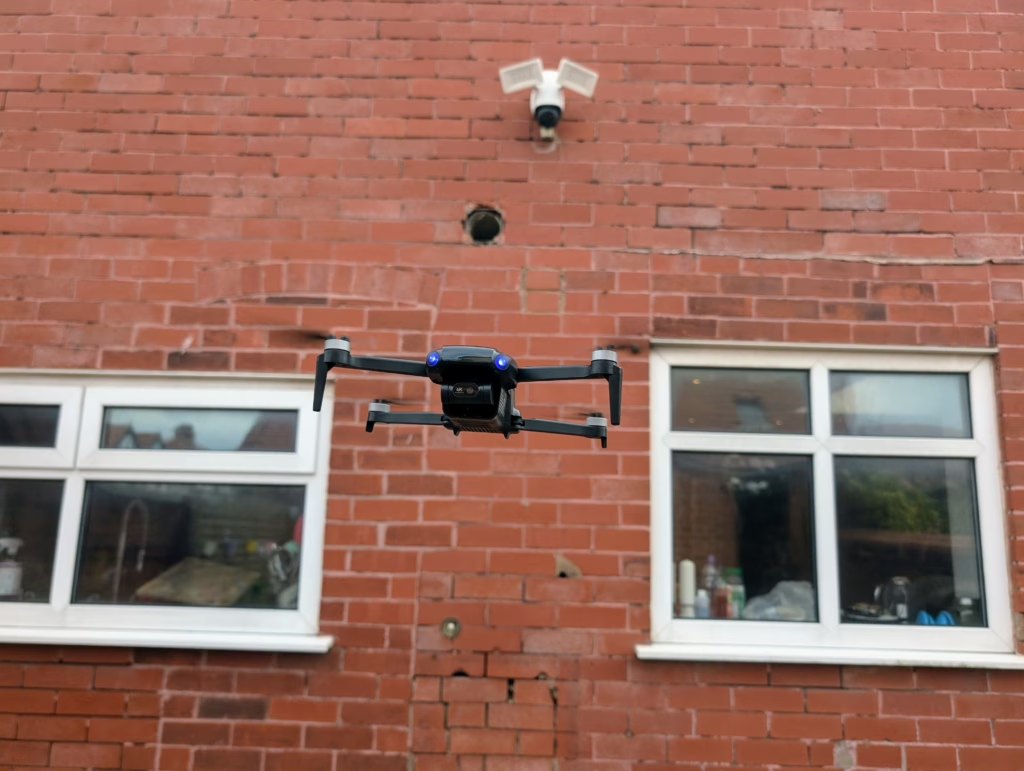
The Ruko U11MINI 4K delivers a stable and responsive flight experience. Thanks to its quadruple positioning system, the drone holds its position well, even in a light breeze. The three speed modes offer a good range of performance for different scenarios.
- Cinema Mode is the slowest, designed for smooth and steady video capture. In tests, it reached a top speed of around 4.0 metres per second, slightly below the advertised 4.5 m/s.
- Normal Mode provides a balance of speed and control, making it suitable for general flying. It clocked in at around 7.0 m/s, compared to the advertised 8 m/s.
- Sport Mode unleashes the drone’s full speed for more dynamic flight. It achieved a speed of approximately 13.4 m/s, close to the 14 m/s specification.
The controls are responsive across all modes. The yaw rate is reasonably quick, especially in Normal and Sport modes, allowing the drone to turn briskly. One issue noted during testing was a tendency for the drone to occasionally lose altitude unexpectedly, particularly during or after fast manoeuvres or turns. This required the pilot to apply throttle to correct its height. While not a constant problem, it is something pilots should be aware of. The intelligent flight modes generally perform well. The GPS Follow Me mode tracks the subject effectively, though its accuracy is dependent on the quality of the phone’s GPS signal. The Point of Interest mode is a standout, allowing for smooth, automated circular shots. The user can adjust the radius, speed, and altitude of the orbit in real-time using the control sticks, offering a great deal of creative freedom. Waypoint flight also functions as expected, flying a pre-plotted course autonomously.
Video and Photo Quality
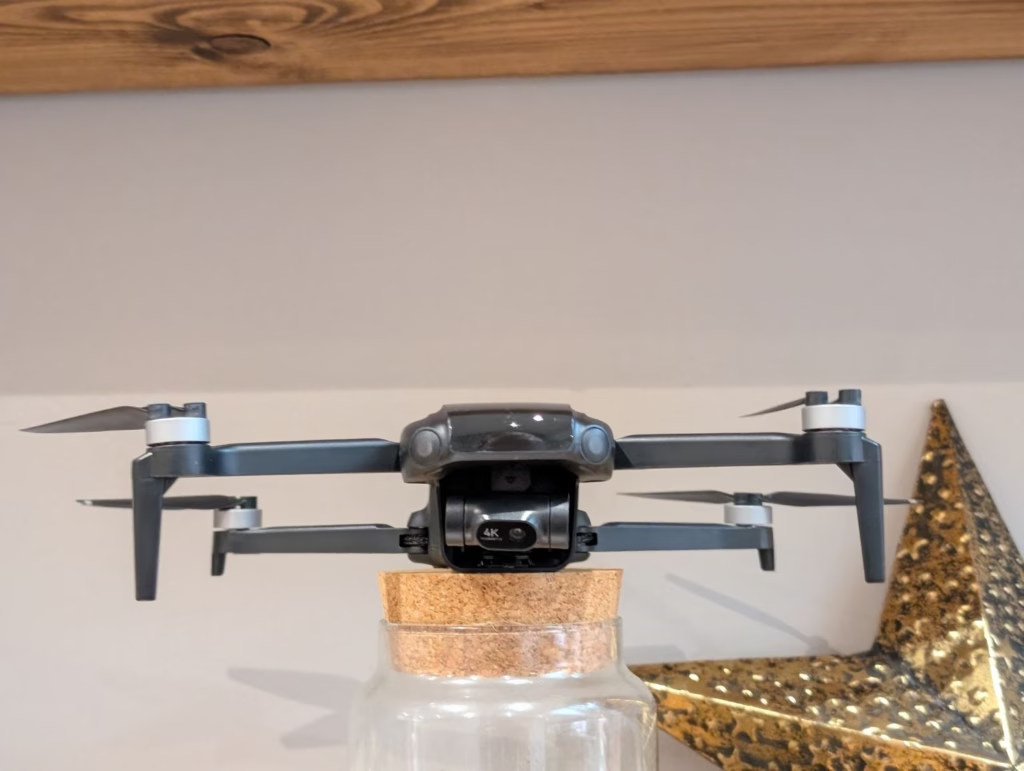
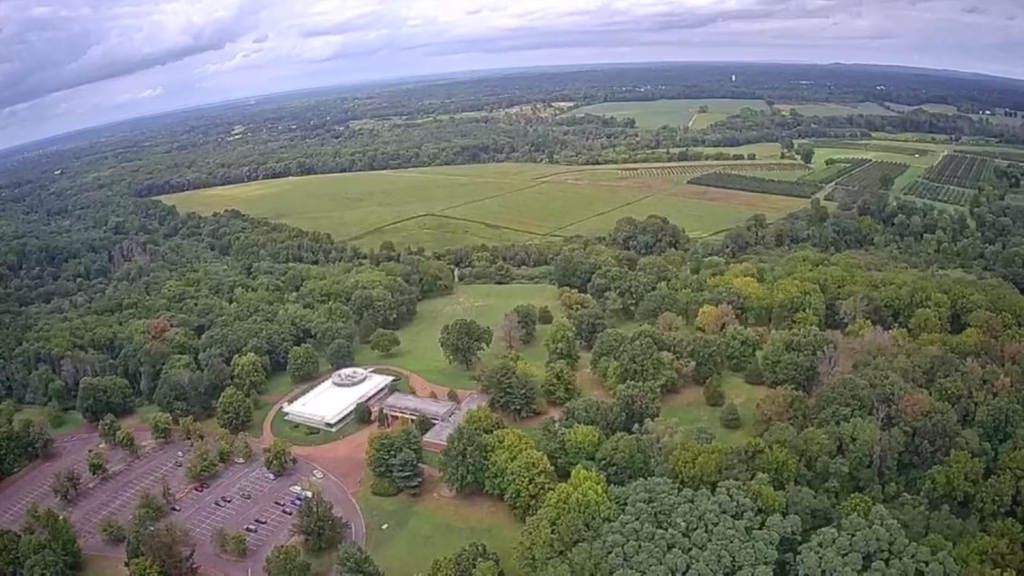
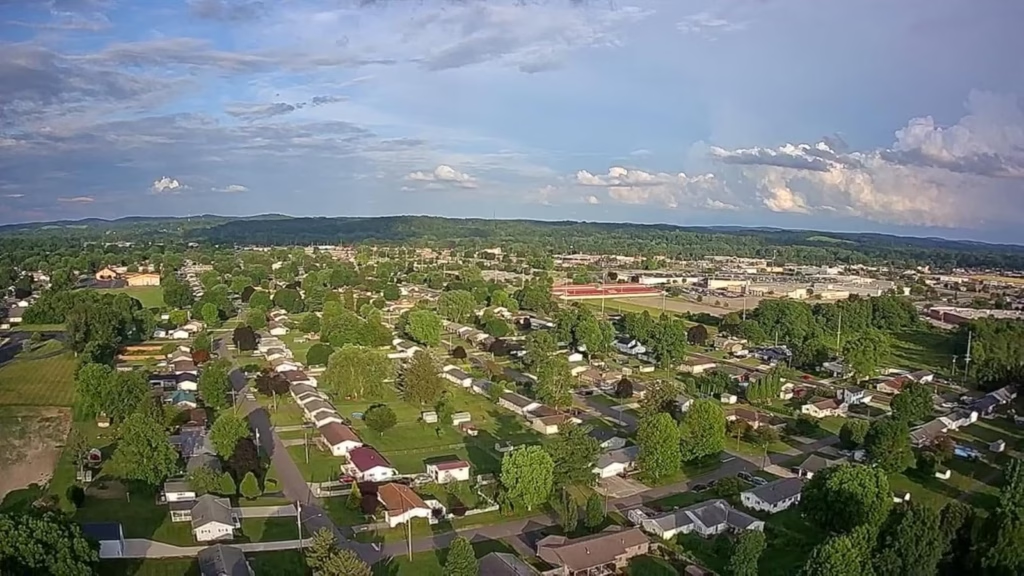
The 4K/30fps video quality is acceptable for a budget drone, but it’s important to have realistic expectations. In good lighting, footage is reasonably sharp with decent colour rendition. The 3-axis gimbal does a solid job of smoothing out flight movements, though you’ll still see some residual shake in windy conditions.
Dynamic range is limited, as you’d expect from a small sensor. Skies blow out easily if you expose for the ground, and shadows go murky if you expose for the sky. You need to fly in good lighting conditions and be mindful of exposure. There’s no adjustable aperture or ND filters included, so controlling exposure is limited to adjusting shutter speed in the app (if that option exists – it wasn’t immediately obvious).
Low light performance is poor. Once the sun starts setting, image quality degrades rapidly with visible noise and loss of detail. The “night mode” mentioned in the specs didn’t produce miracles – it’s still a tiny sensor with limited light-gathering capability.
The 8K photos (48MP stills) are sharp and detailed in good light, though they’re clearly processed aggressively to boost sharpness. Zooming in reveals some oversharpening halos and noise reduction artefacts. For social media or web use, they’re fine. For serious photography, they’re not competing with a proper camera.
The 5x digital zoom is exactly that – digital. It crops and upscales, resulting in noticeable quality loss. At 5x, the image is soft and lacks detail. It’s there if you need it, but footage won’t be usable for anything beyond quick social media posts.
Battery Life and Range
The claimed 32-minute flight time needs context. In my testing, I got the low battery warning (first stage, yellow) at around 27-30 minutes, depending on flight style. At this point, the drone implements geo-fencing – you can only fly within a limited radius to preserve battery for return-to-home.
The critical low battery warning (second stage, red) came a few minutes later, at which point the drone automatically initiates return-to-home if you don’t land manually. So while you might technically get 32 minutes of motor run time before the battery is completely depleted, your usable flight time is realistically 25-28 minutes.
This is actually typical for drones – claimed flight times assume perfect conditions, no wind, and flying until the battery is dangerously low. Real-world usable time is always less. The U11MINI isn’t misleading here; it’s just how the industry quotes specs.
Battery charging takes roughly 90-120 minutes from empty to full using a standard USB charger. There’s no fast charging support beyond the USB-C standard charging rates. If you buy the three-battery bundle, you’ll want a multi-port USB charger to charge them simultaneously.
Range testing, as mentioned earlier, saw me push the drone beyond 900 metres with solid video feed and control. I couldn’t test the full 6km, but based on signal strength at 900m, I’d believe it’s achievable in ideal conditions (flat terrain, no interference, clear line of sight).
The video transmission quality remained surprisingly stable even at extended range. I was honestly impressed – this is an area where budget drones often struggle, but Ruko seems to have done a decent job with the transmission system.
Price and Alternative Options
| Preview | Product | Rating | Price | |
|---|---|---|---|---|

| U11MINI 4K Ruko Drone with camera 8K Photo & 4K/30fps Video,... |
£329.99 | Buy on Amazon |
The Ruko U11MINI 4K Drone is priced at £330 on Amazon for the standard model, or there is a model with three batteries allowing you to stop and start with minimal downtime for £450.
The DJI Mini 4K is priced from £269 for just the drone or £329 for the combo kit, which includes a remote controller and a spare battery. It also does 4K/30fps, has a 31-minute flight time per battery and a 10kkm range
For a bit less money, there is the Potensic ATOM GPS Drone, which is another 4K drone with a similar spec to the Ruko, but includes three batteries with a 32-minute flight time per battery. It is worth noting that the 4K camera sensor on this is not as good being 1/3” Sony CMOS sensor vs 1/2″.
Overall
The Ruko U11MINI 4K is a decent drone that delivers reasonable performance for the money, but it struggles to justify its existence in a market where the DJI Mini 4K exists at a similar or lower price point.
What it does well: The 3-axis gimbal produces smooth footage in good conditions. The cruise control feature is genuinely useful. Return-to-home accuracy is excellent. The three-battery bundle (£450 version) gives you genuine all-day flying capability. The 1/2″ sensor produces better image quality than cheaper competitors like the Potensic ATOM. Range and video transmission quality impressed me.
What it doesn’t do well: Actual flight speeds fall short of marketing claims. Occasional altitude fluctuations during flight affect footage quality. Yaw is too aggressive even in cinema mode. The app feels dated and connection can be temperamental. Low light performance is poor (though this is true of all budget drones). Image quality, while decent, doesn’t match DJI’s processing.
While the overall specs of the Ruko and DJI are similar, and perhaps even favour the Ruko slightly, DJI are the biggest drone brand around with a much more mature ecosystem. One example of the benefits of this is spare parts. You can pick up third-party spare parts and accessories for considerably less with the DJI than with the Ruko. Additionally, I’d expect the resale value of the DJI Mini 4K to be much better, so the total cost of ownership will end up quite a bit lower.
Overall, I like the Ruko U11MINI 4K, and I can give it a good recommendation, but I think the is a more sensible purchase.
Ruko U11MINI 4K Drone Review
Summary
The Ruko U11MINI 4K is a feature-packed budget drone with solid performance, good stability and a capable camera for the price. However, in a market dominated by DJI, it is difficult to recommend over the Mini 4K given the similar pricing, stronger ecosystem and better long-term value. It remains a decent option, particularly with the three-battery bundle, but buyers should carefully weigh it against the alternatives.
Overall
70%-
Overall - 70%70%
Pros
3-axis gimbal provides smooth and stable video
Good flight time with three-battery bundle (up to 96 minutes)
Cruise control and return-to-home functions work reliably
1/2″ sensor gives better results than some rival budget drones
Impressive transmission range and video feed stability
Cons
Low light performance is poor
Weaker ecosystem and resale value compared to DJI
I am James, a UK-based tech enthusiast and the Editor and Owner of Mighty Gadget, which I’ve proudly run since 2007. Passionate about all things technology, my expertise spans from computers and networking to mobile, wearables, and smart home devices.
As a fitness fanatic who loves running and cycling, I also have a keen interest in fitness-related technology, and I take every opportunity to cover this niche on my blog. My diverse interests allow me to bring a unique perspective to tech blogging, merging lifestyle, fitness, and the latest tech trends.
In my academic pursuits, I earned a BSc in Information Systems Design from UCLAN, before advancing my learning with a Master’s Degree in Computing. This advanced study also included Cisco CCNA accreditation, further demonstrating my commitment to understanding and staying ahead of the technology curve.
I’m proud to share that Vuelio has consistently ranked Mighty Gadget as one of the top technology blogs in the UK. With my dedication to technology and drive to share my insights, I aim to continue providing my readers with engaging and informative content.
Last update on 2025-11-25 / Affiliate links / Images from Amazon Product Advertising API

